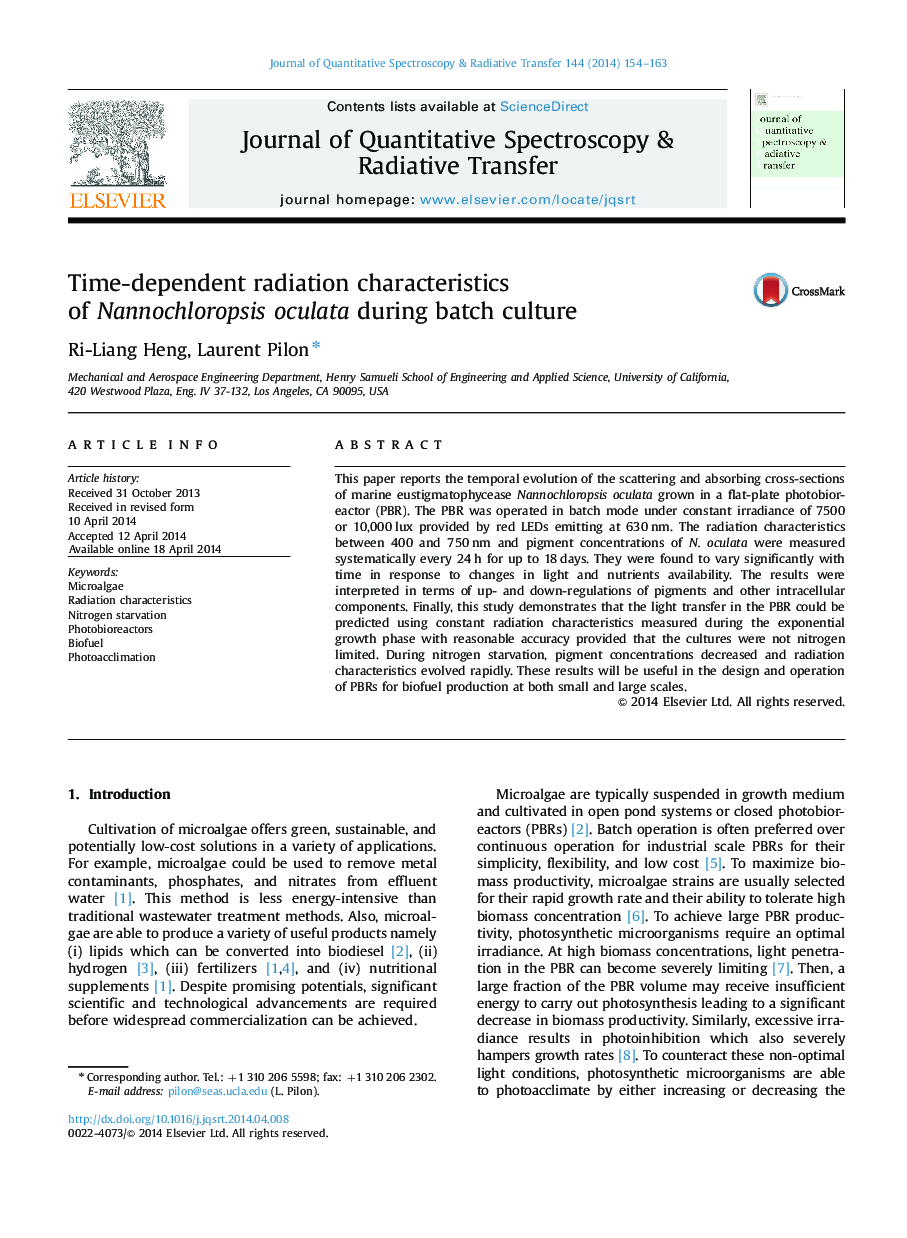| Article ID | Journal | Published Year | Pages | File Type |
|---|---|---|---|---|
| 5428196 | Journal of Quantitative Spectroscopy and Radiative Transfer | 2014 | 10 Pages |
â¢N. oculata cultures were grown in batch mode under two different irradiances.â¢Temporal evolution of their absorption and scattering cross-sections was reported.â¢The effects of photoacclimation and nitrogen starvation were quantified.â¢Results were interpreted in terms of regulation of cell constituents.
This paper reports the temporal evolution of the scattering and absorbing cross-sections of marine eustigmatophycease Nannochloropsis oculata grown in a flat-plate photobioreactor (PBR). The PBR was operated in batch mode under constant irradiance of 7500 or 10,000Â lux provided by red LEDs emitting at 630Â nm. The radiation characteristics between 400 and 750Â nm and pigment concentrations of N. oculata were measured systematically every 24Â h for up to 18Â days. They were found to vary significantly with time in response to changes in light and nutrients availability. The results were interpreted in terms of up- and down-regulations of pigments and other intracellular components. Finally, this study demonstrates that the light transfer in the PBR could be predicted using constant radiation characteristics measured during the exponential growth phase with reasonable accuracy provided that the cultures were not nitrogen limited. During nitrogen starvation, pigment concentrations decreased and radiation characteristics evolved rapidly. These results will be useful in the design and operation of PBRs for biofuel production at both small and large scales.
